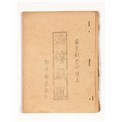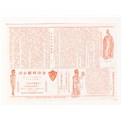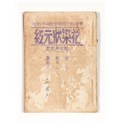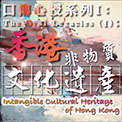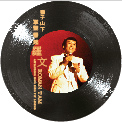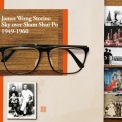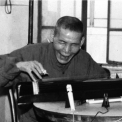-
History & Society
- Education in Pre-war Hong Kong
- History of Taikoo Sugar Refinery
- Hong Kong Products Exhibition
- Local Festivals Around the Year
- Post-war Industries
- Pre-war Industry
- The Hong Kong Jockey Club Archives
- Tin Hau Festival
- Memories We Share: Hong Kong in the 1960s and 1970s
- History in Miniature: The 150th Anniversary of Stamp Issuance in Hong Kong
- A Partnership with the People: KAAA and Post-war Agricultural Hong Kong
- The Oral Legacies (I) - Intangible Cultural Heritage of Hong Kong
- Hong Kong Currency
- Hong Kong, Benevolent City: Tung Wah and the Growth of Chinese Communities
- The Oral Legacies Series II: the Representative List of the Intangible Cultural Heritage of Hong Kong
- Braving the Storm: Hong Kong under Japanese Occupation
- A Century of Fashion: Hong Kong Cheongsam Story
Geography & EnvironmentArt & Culture- Calendar Posters of Kwan Wai-nung
- Festival of Hong Kong
- Ho Sau: Poetic Photography of Daily Life
- Hong Kong Cemetery
- Sketches by Kong Kai-ming
- The Culture of Bamboo Scaffolding
- The Legend of Silk and Wood: A Hong Kong Qin Story
- Journeys of Leung Ping Kwan
- From Soya Bean Milk To Pu'er Tea
- Applauding Hong Kong Pop Legend: Roman Tam
- 他 FASHION 傳奇 EDDIE LAU 她 IMAGE 百變 劉培基
- A Eulogy of Hong Kong Landscape in Painting: The Art of Huang Bore
- Imprint of the Heart: Artistic Journey of Huang Xinbo
- Porcelain and Painting
- A Voice for the Ages, a Master of his Art – A Tribute to Lam Kar Sing
- Memories of Renowned Lyricist: Richard Lam Chun Keung's Manuscripts
- Seal Carving in Lingnan
- Literary Giant - Jin Yong and Louis Cha
-
History & SocietyGeography & EnvironmentArt & Culture
-
View Oral History RecordsFeatured StoriesAbout Hong Kong Voices
-
Hong Kong MemoryA Voice for the Ages, a Master of his Art – A Tribute to Lam Kar SingRecently Visited
Early Training and Mentorship
Born Lam Man Shun in Hong Kong in 1933, Lam Kar Sing developed a keen interest in Cantonese opera as a boy thanks to the influence of his father, an aficionado of the art form who often took Lam and his older sister, Man Nei, to see full opera performances as well as recitals of operatic arias. With the Japanese occupation of Hong Kong in 1941 that followed the outbreak of the Sino-Japanese War, Lam stopped attending formal schooling and instead enrolled at the Rose Music Centre, where he learned to sing Cantonese opera arias and play the yangqin (Chinese dulcimer), before moving to Guangzhou with his father the next year. In 1944, he enrolled in Tang Chiu Lan Fong’s Cantonese opera training school to be trained in traditional plots, a formulaic performance that dates back to ancient China and in which the actors perform set routines from prompts and cues rather than from a prepared score. Lam made his stage debut just half a year after joining the school, an event that marked the beginning of a lifelong career in Cantonese opera. When the war finished in 1945, he returned to Hong Kong with his father and continued his training under several famous artists. Truly exhaustive in scope, his coaching now covered stylised fighting routines of the Northern School, martial arts, vocalisation skills as well as percussive point techniques as part of the ensemble. Lam was always able to assimilate the best aspects of the different stylistic schools, but perhaps the greatest influence came from Sit Kok Sin, a leading light in Cantonese opera at that time.
Lam first met Sit in 1949 when he accompanied the journalist Law Lai Ming on a visit to the maestro at his home. Offered the golden opportunity to accompany Sit by marking the percussive points during a singing session, he so impressed the maestro with his tempo control that Sit offered to take him as a pupil and teach him singing and acting skills. Lam was also given small roles when Sit performed with the Tai Fung Wong and Chun Sin Mei opera troupes, affording Lam the valuable experience of seeing his mentor in action. Sit’s stringent requirements for a perfect performance shaped Lam’s expectations of what he wanted to achieve in his chosen art form.
When the maestro Sit Kok Sin passed away in 1956, the impresario Madam Shing Doh Na formed the Kok Sing Opera Troupe in honour of this legend of his time and invited Lam to take up the role of man mou sang (the principal male role). With a stock repertoire consisting of Sit’s classics, including Flower and the Top Scholar, Why Don’t You Return? and The Dream Encounter between Emperor of Han and Lady Wai, the troupe won rave reviews and popular acclaim. The name Lam Kar Sing was also soon recognised as an up-and-coming young talent. In 1958, he joined the Bo Ding Opera Troupe as the man mou sang with Lee Bo Ying as his female counterpart. Together, the two of them created many audience favourites, with Lam’s thespian versatility coming to the fore especially in The Tragic Story of Leung Shan Pak and Chuk Ying Toi and The Story of Wong Bo Chuen, as he demonstrated his capability in both civil and military roles. Although he was already the man mou sang in the modest Bo Ding troupe, he was keen to play the siu sang (the supporting male role) in troupes with stellar casts, including such luminaries as Tai Lung Fung and Sin Fung Ming, with the aim of gaining more experience and continuing his improvement. To this end, he conceived a rule of thumb for himself: ‘study more, practise more, perform more and diversify more’.
Photos
Copyright © 2012 Hong Kong Memory. All rights reserved.






